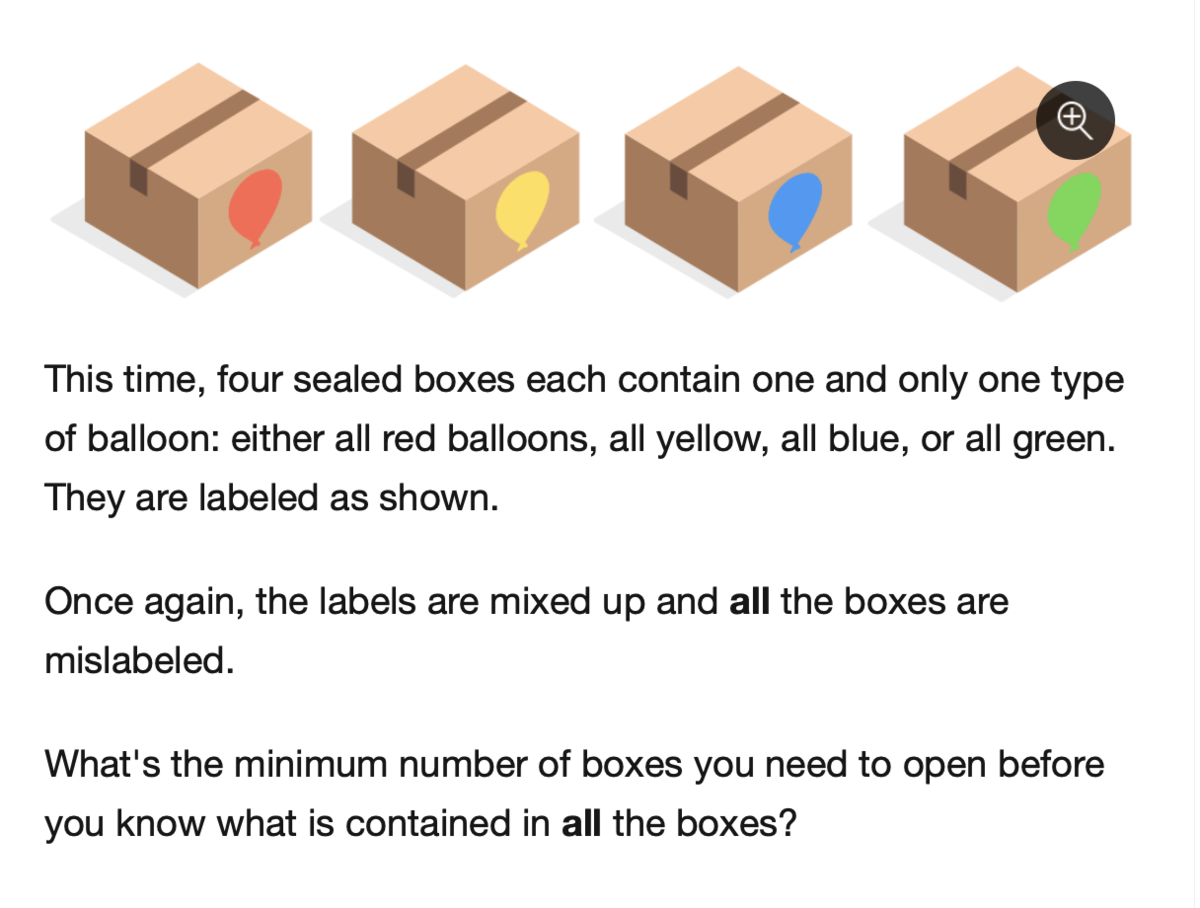What's the minimum number of boxes you need to open before you know what is contained in all the boxes?

Found this problem: And the correct answer is: 2
Counter-Argument: What if
- Red Box : Green Balloons
- Yellow Box: Blue Balloons
- Blue Box: Red Balloons
- Green Box: Yellow Balloon
Thus, we need to open minimum of 3 boxes to know what is contained in all the boxes"
Doesn't that makes sense?
I know the question asked for MINIMUM NUMBER OF BOXES, and if you'll look at the explanation, they have proved their answer. But what if there happens to be the case mentioned above?
No vote yet
1 vote
Easy Math Editor
This discussion board is a place to discuss our Daily Challenges and the math and science related to those challenges. Explanations are more than just a solution — they should explain the steps and thinking strategies that you used to obtain the solution. Comments should further the discussion of math and science.
When posting on Brilliant:
*italics*or_italics_**bold**or__bold__paragraph 1
paragraph 2
[example link](https://brilliant.org)> This is a quote# I indented these lines # 4 spaces, and now they show # up as a code block. print "hello world"\(...\)or\[...\]to ensure proper formatting.2 \times 32^{34}a_{i-1}\frac{2}{3}\sqrt{2}\sum_{i=1}^3\sin \theta\boxed{123}Comments
No, it's still 2.
Why blue box can not contain yellow balloon? If you'll check the case 1 in the explanation, they have taken the assumption of "swapping the balloons"
Log in to reply
Because the green box already contains yellow balloons, so the blue box cannot contain yellow balloons (again).
Log in to reply
How can you be sure, what if green box contains red balloons? Don't you think in order to verify we need to check the third box?
Log in to reply
Suppose it's:
The answer is still 2.
Log in to reply
I totally agree with your solution but
If the order is Red Box : Green Balloons Yellow Box: Blue Balloons Blue Box: Red Balloons Green Box: Yellow Balloon
And the order of opening boxes is
1st: Red Box 2nd: Yellow Box
Then there is no way to figure out which colored balloon is present in Blue and Green box. Because it creates possibilities:
Blue box can contain : Yellow balloon or Red Balloon Similarly Green box can contain: Yellow balloon or Red Balloon
That's the only doubt I have.
Log in to reply
You shouldn't open the box in the given order.
Suppose you open the first box labeled colour X, and it shows that it contain balloons of colour Y, then open the second box with label colour Y. That way, you don't have to open the third box to figure out all the remaining colors.